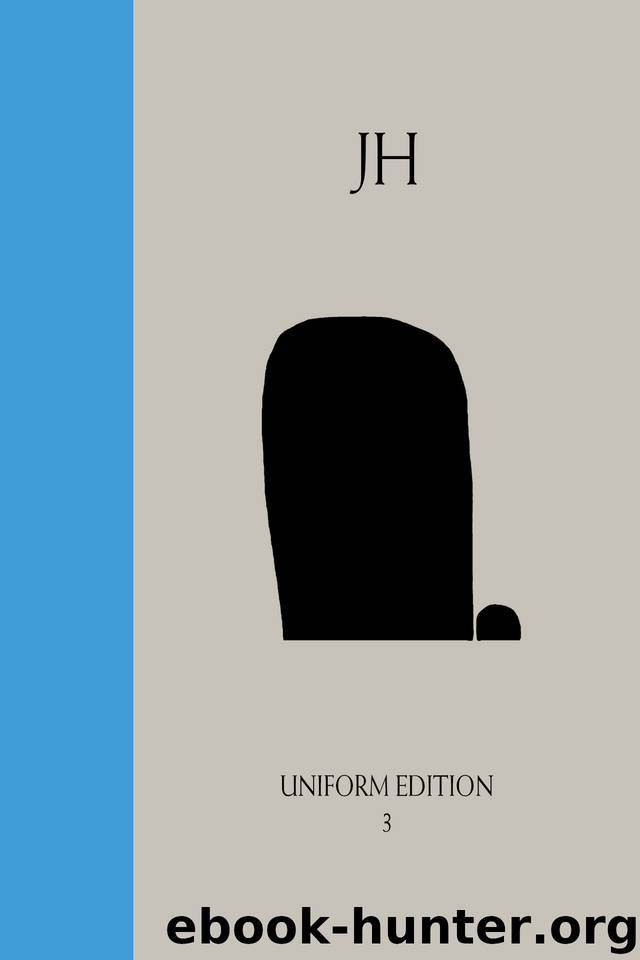Senex & Puer (Uniform Edition of the Writings of James Hillman Book 3) by Hillman James

Author:Hillman, James [Hillman, James]
Language: eng
Format: epub
Publisher: Spring Publications, Inc.
Published: 2011-12-22T16:00:00+00:00
6
Pothos: The Nostalgia of the Puer Eternus
THE question that shall be engaging us in our wanderings through this chapter is the psychological one of nostalgia. Before setting forth we must be sure to distinguish between the principal and profound experience of nostalgia – an archetypal nostalgia which may itself be a “nostalgia for the archetype” – and all recent manifestations of nostalgia: the attractions for the 1930s and 1940s in films, the longings for romantic sexuality or for pure unpolluted nature, the nostalgie de la boue (nostalgia for the mud) of the “honest peasant,” or for gypsy clothes and antiques. These are temporalizations of nostalgia into autre fois (another time), or a secularization and commercialization of nostalgic values. Such is sociological nostalgia, whereas our eye is on archetypal nostalgia.
I hope we can arrive at a third perspective towards our phenomenon: one that is neither the dernier cri of a commercial vogue nor the premier cri of primal scream therapy (Janov), a cry for the mother and the past pains in our souls, but a cri imaginaire, a cry for the imaginal, the C. R. I. [1] of Chambéry.
To go in this third direction, away from both social and personalistic explanations, we must follow a fundamental principle upon which archetypal psychology is based – the principle of epistrophē or reversion. Epistrophē is a Neoplatonic idea: we find it elaborated best in Proclus’s Elements of Theology, especially Proposition 29. Briefly, this idea considers all phenomena to have an archetypal likeness to which they can be led back, reverted, returned. All events in the realm of soul, that is, all psychological events and behaviors, have a similarity, correspondence, likeness with an archetypal pattern. Our lives follow mythical figures: we act, think, feel, only as permitted by primary patterns established in the imaginal world. Our psychological lives are mimetic to myths. As Proclus notes, secondary phenomena (our personal experiences) can be reverted to a primary or primordial background against which they resonate and to which they belong. The task of archetypal psychology, and its therapy, is to discover the archetypal pattern for forms of behavior. The assumption is always that everything belongs somewhere : all forms of psychopathology have their mythical substrate and belong or have their home in myths. Moreover, psychopathology is itself a means of reverting to myth, a means of being affected by myth and entering into myth. Or, as Jung said: “The gods have become diseases,” [2] so that today it is to our pathologies we must look for finding the gods.
The particular psychopathological events that attract us specifically here are those of restlessness and wandering, homelessness and homesickness together, the suffering of nostalgia which is at the same time an impetus for search and quest.
Our method has been partly described by Henry Corbin when writing of ta’wīl, which he says means: “reconduire, ramener une chose à son origine et principe, a son archetype.” As he says further: “In ta’wīl one must carry sensible forms back to imaginative forms and then rise
Download
This site does not store any files on its server. We only index and link to content provided by other sites. Please contact the content providers to delete copyright contents if any and email us, we'll remove relevant links or contents immediately.
Rewire Your Anxious Brain by Catherine M. Pittman(18292)
Talking to Strangers by Malcolm Gladwell(12867)
The Art of Thinking Clearly by Rolf Dobelli(9909)
Mindhunter: Inside the FBI's Elite Serial Crime Unit by John E. Douglas & Mark Olshaker(8699)
Becoming Supernatural by Dr. Joe Dispenza(7832)
Change Your Questions, Change Your Life by Marilee Adams(7371)
The Road Less Traveled by M. Scott Peck(7276)
Nudge - Improving Decisions about Health, Wealth, and Happiness by Thaler Sunstein(7240)
The Lost Art of Listening by Michael P. Nichols(7159)
Mastermind: How to Think Like Sherlock Holmes by Maria Konnikova(6936)
Enlightenment Now: The Case for Reason, Science, Humanism, and Progress by Steven Pinker(6871)
Win Bigly by Scott Adams(6826)
The Way of Zen by Alan W. Watts(6288)
Daring Greatly by Brene Brown(6222)
Big Magic: Creative Living Beyond Fear by Elizabeth Gilbert(5351)
Grit by Angela Duckworth(5295)
Men In Love by Nancy Friday(4963)
Ego Is the Enemy by Ryan Holiday(4954)
Altered Sensations by David Pantalony(4863)
